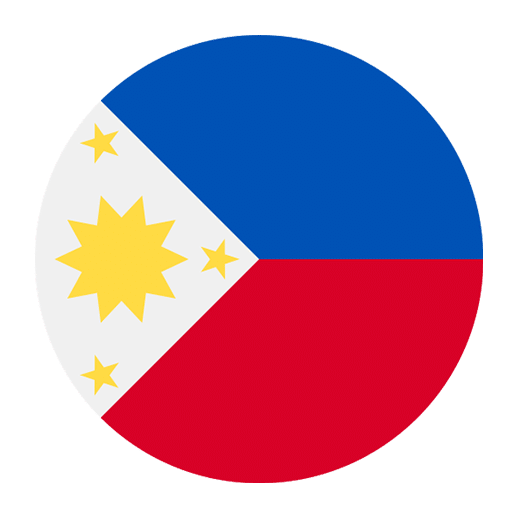Tagalog, also known as Filipino, is the national language of the Philippines and one of the most widely spoken languages in the country. For diplomats and international relations professionals, learning Tagalog can provide a strategic advantage in fostering relationships, understanding cultural nuances, and navigating the complex socio-political landscape of the Philippines. This article aims to offer an in-depth guide for diplomats and international relations professionals interested in mastering Tagalog, with a focus on practical usage, cultural insights, and essential vocabulary.
Why Learn Tagalog?
Cultural Understanding: Learning Tagalog allows diplomats to gain a deeper understanding of Filipino culture, traditions, and societal norms. This cultural insight can facilitate smoother interactions and negotiations, as well as foster mutual respect and trust.
Professional Advantage: Proficiency in Tagalog can set diplomats apart from their peers, demonstrating a commitment to meaningful engagement with the Philippines. It can also enhance communication with local stakeholders, government officials, and the general public.
Effective Communication: While many Filipinos speak English, there are instances where communication in Tagalog can be more effective. This is especially true in rural areas or when engaging with individuals who may not be as comfortable speaking English.
Basic Structure of Tagalog
Tagalog is an Austronesian language with a relatively simple grammatical structure compared to many Western languages. Here are some fundamental aspects:
Pronunciation
Tagalog pronunciation is generally phonetic, meaning words are pronounced as they are spelled. Here are some key points:
– The vowels are pronounced as follows: “a” like ‘father,’ “e” like ‘bed,’ “i” like ‘machine,’ “o” like ‘or,’ and “u” like ‘put.’
– Consonants are similar to English, but with some differences. For example, “ng” is pronounced as a single sound, similar to the ‘ng’ in ‘sing.’
– Stress is important in Tagalog and can change the meaning of words. Typically, the stress falls on the second-to-last syllable unless otherwise indicated by an accent mark.
Sentence Structure
Tagalog typically follows a Verb-Subject-Object (VSO) word order, although variations are common. For example:
– “Kumain ako ng mansanas.” (I ate an apple.)
– Kumain (ate) + ako (I) + ng mansanas (an apple)
Markers and Particles
Markers and particles play a crucial role in Tagalog grammar. They indicate the role of words in a sentence, such as the subject, object, or location.
– Ang: Marks the subject of the sentence.
– Ng: Marks the direct object or an indefinite subject.
– Sa:</b: Marks the location or direction.
For example:
– "Ang lalaki ay kumakain ng mangga sa bahay." (The man is eating a mango at home.)
– Ang (subject marker) + lalaki (man) + ay (linker) + kumakain (is eating) + ng mangga (a mango) + sa bahay (at home)
Essential Vocabulary for Diplomats
Having a robust vocabulary is crucial for effective communication. Here are some essential words and phrases that diplomats and international relations professionals should know:
Greetings and Polite Expressions
– Magandang umaga (Good morning)
– Magandang hapon (Good afternoon)
– Magandang gabi (Good evening)
– Kumusta? (How are you?)
– Salamat (Thank you)
– Walang anuman (You’re welcome)
– Paumanhin (Excuse me/Sorry)
– Pakiusap (Please)
Common Phrases
– Oo (Yes)
– Hindi (No)
– Saan? (Where?)
– Kailan? (When?)
– Bakit? (Why?)
– Sino? (Who?)
– Ano? (What?)
Diplomatic and Professional Terms
– Embahada (Embassy)
– Konsulado (Consulate)
– Diplomasya (Diplomacy)
– Kasunduan (Agreement)
– Pakikipag-ugnayan (Engagement/Relations)
– Tagapamagitan (Mediator)
– Pulitika (Politics)
– Pagsusuri (Assessment/Analysis)
Practical Applications
Engaging with Government Officials
When engaging with Filipino government officials, it’s beneficial to use formal language and titles. Addressing someone with respect can pave the way for positive interactions.
Example:
– “Magandang umaga, Ginoong Ministro. Ako po si [Your Name] mula sa [Your Country]. Ikinagagalak ko pong makipag-usap sa inyo tungkol sa ating kasunduan.” (Good morning, Mr. Minister. I am [Your Name] from [Your Country]. I am pleased to discuss our agreement with you.)
Navigating Social Situations
Understanding cultural etiquette is crucial. Filipinos value hospitality and respect, and using appropriate language can help build strong relationships.
Example:
– “Salamat po sa inyong pag-anyaya. Ikinagagalak ko pong makasama kayo ngayong gabi.” (Thank you for your invitation. I am pleased to join you this evening.)
Addressing the Public
When addressing the public or making official statements, clarity and respect are key. Using simple, direct language can ensure your message is well-received.
Example:
– “Mga kababayan, nais ko pong ipahayag ang aming suporta sa inyong mga adhikain at pangarap para sa bayan.” (Fellow countrymen, I would like to express our support for your aspirations and dreams for the nation.)
Cultural Insights
Understanding cultural nuances can significantly enhance your diplomatic efforts. Here are some key cultural insights:
Respect and Politeness
Filipinos place a high value on respect and politeness, especially towards elders and authority figures. Using formal language and titles is a sign of respect.
Hospitality
Hospitality is a cornerstone of Filipino culture. Accepting invitations and participating in social gatherings can strengthen relationships and build trust.
Indirect Communication
Filipinos often use indirect communication to avoid confrontation and maintain harmony. Being sensitive to non-verbal cues and reading between the lines can help in understanding the true message.
Family and Community
Family and community are highly valued in Filipino culture. Understanding the importance of these relationships can provide context for social and political dynamics.
Tips for Learning Tagalog
Immerse Yourself
Immersion is one of the most effective ways to learn a language. Spend time in the Philippines, interact with locals, and practice speaking Tagalog as much as possible.
Use Language Learning Apps
There are numerous language learning apps available that can help you practice and improve your Tagalog skills. Some popular options include Duolingo, Rosetta Stone, and Babbel.
Take a Language Course
Enrolling in a formal language course can provide structured learning and personalized feedback. Look for courses specifically designed for diplomats or professionals.
Practice with Native Speakers
Engage in conversations with native Tagalog speakers to practice your skills and gain confidence. Language exchange programs or finding a language partner can be beneficial.
Study Cultural Context
Learning about Filipino culture, history, and societal norms can enhance your understanding of the language and improve your communication skills.
Conclusion
For diplomats and international relations professionals, learning Tagalog offers numerous benefits, from enhancing professional interactions to gaining cultural insights. By understanding the basic structure of the language, mastering essential vocabulary, and applying practical communication strategies, you can navigate the complex landscape of the Philippines with confidence and ease. Embrace the journey of learning Tagalog and enrich your diplomatic endeavors with meaningful connections and deeper cultural understanding.

